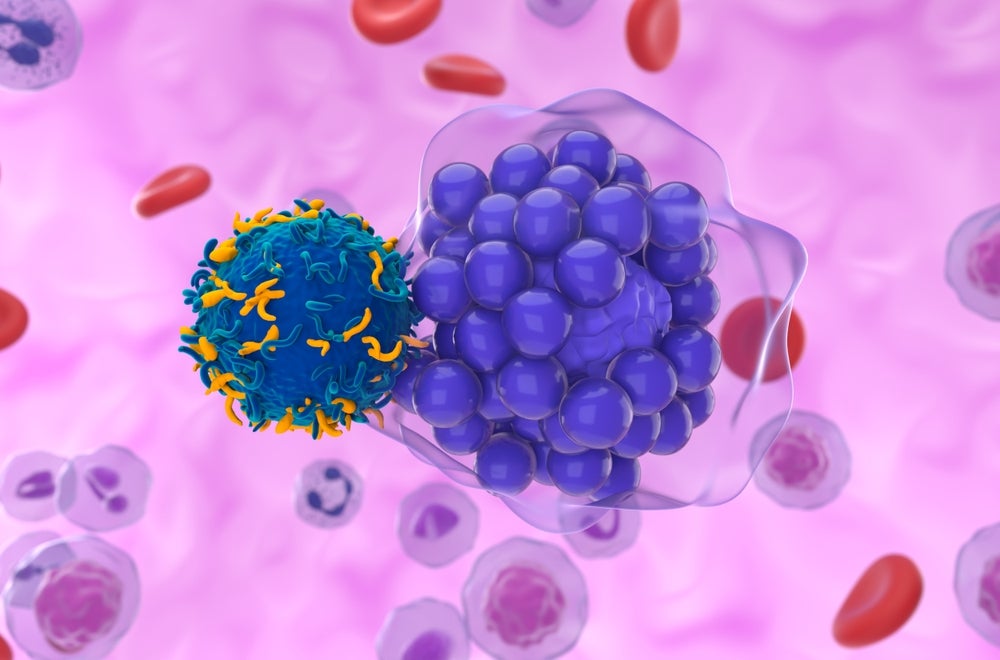Repeated Sepsis Raises Neurodevelopment Risks in Preemies
In a groundbreaking new study published in Pediatric Research, researchers have fundamentally challenged the prevailing understanding of how neonatal infections impact neurodevelopment in preterm infants. The conventional wisdom has long centered around the notion that a single episode of sepsis or necrotizing enterocolitis (NEC) could serve as a primary determinant of long-term neurological outcomes. However, […]


In a groundbreaking new study published in Pediatric Research, researchers have fundamentally challenged the prevailing understanding of how neonatal infections impact neurodevelopment in preterm infants. The conventional wisdom has long centered around the notion that a single episode of sepsis or necrotizing enterocolitis (NEC) could serve as a primary determinant of long-term neurological outcomes. However, the latest findings by Ryu, J.H., Shin, S.H., Shin, B.S., and colleagues suggest a far more complex and cumulative relationship between multiple infectious insults and adverse neurodevelopmental consequences.
Preterm infants, defined as those born before 37 weeks of gestation, represent one of the most vulnerable populations in neonatal care. Their immature organs, especially the brain and immune system, expose them to significant risks including sepsis and NEC. Sepsis, a systemic inflammatory response to infection, and NEC, a severe inflammatory bowel disease, both independently elevate the risk of poor neurodevelopmental outcomes. Until now, clinicians and researchers tended to evaluate these risks predominantly in the context of isolated infectious episodes, potentially underestimating the true cumulative damage inflicted by recurrent insults.
The study systematically analyzed neurodevelopmental trajectories in preterm infants who experienced either one or multiple episodes of sepsis and/or NEC. Employing sophisticated neuroimaging techniques alongside comprehensive neurodevelopmental assessments over extended follow-up periods, the research team discovered that infants with recurrent infections exhibited significantly exacerbated neurodevelopmental impairments compared to those who endured a single episode. This suggests that repeated inflammatory insults might initiate a cascade of neuropathological events, compounding damage to critical brain regions responsible for cognition, motor skills, and sensory processing.
.adsslot_weaul2t675{width:728px !important;height:90px !important;}
@media(max-width:1199px){ .adsslot_weaul2t675{width:468px !important;height:60px !important;}
}
@media(max-width:767px){ .adsslot_weaul2t675{width:320px !important;height:50px !important;}
}
ADVERTISEMENT
These findings hold immense implications for neonatal intensive care practices. Traditionally, efforts have focused on early identification and prompt treatment of isolated sepsis or NEC episodes, aiming to minimize immediate mortality and morbidity. However, the recognition that multiple episodes portend greater neurodevelopmental risk necessitates a paradigm shift. Preventive strategies must now emphasize rigorous infection control protocols, continuous monitoring for recurrent infectious episodes, and interventions aimed at breaking the cycle of inflammation.
From a mechanistic perspective, the study delves into the biological underpinnings linking repeated infections to heightened neurotoxicity. The immature neonatal brain is particularly susceptible to inflammation-induced injury via microglial activation, cytokine release, and disruption of the blood-brain barrier. With each successive infectious episode, these processes are likely amplified, leading to cumulative neuronal apoptosis, white matter injury, and impaired synaptic connectivity. The researchers hypothesize that such neuroinflammatory cascades could be pivotal processes driving the observed deficits in motor function, language development, and executive function in affected infants.
Moreover, the study’s methodology incorporated advanced longitudinal magnetic resonance imaging (MRI) scans to visualize structural and functional brain changes over time. Infants with multiple infectious episodes repeated imaging showed progressive attenuation in brain volume, particularly within the cerebral cortex and subcortical regions such as the thalamus and basal ganglia. Functional MRI assessments further revealed aberrant neural network activity patterns, indicative of disrupted neurodevelopmental processes salient for cognition and sensory integration. These objective imaging biomarkers provide convergent evidence bolstering the notion that repeated inflammatory assaults crucially undermine brain maturation.
The clinical ramifications extend beyond mere prognostication. By identifying infants with a history of multiple sepsis or NEC episodes as a high-risk subgroup, clinicians can tailor early intervention strategies more effectively. This might include intensified neurodevelopmental surveillance, occupational and physical therapy, and potentially experimental neuroprotective treatments aimed at mitigating inflammation-induced injury. Early and sustained rehabilitative efforts may improve quality of life and long-term outcomes for these vulnerable patients.
Furthermore, the study underscores the importance of multimodal infection prevention measures in neonatal intensive care units (NICUs). Enhanced aseptic techniques, judicious use of antibiotics to prevent resistance, and nutritional strategies targeting gut microbiota stabilization could collectively reduce sepsis and NEC incidence and recurrence. Innovations like probiotic administration and novel biomarkers for early infection detection may also play pivotal roles in reducing the frequency and severity of neonatal infections, thereby indirectly protecting neurodevelopmental trajectories.
The authors also discuss the broader implications of their findings for neurodevelopmental research. By moving beyond the single-episode infection model, this study encourages the integration of cumulative inflammatory burden metrics into future investigations. A comprehensive understanding of temporal patterns and interactions between infectious insults and brain development may unveil novel therapeutic targets. It also highlights the necessity for longer-term follow-up studies extending well into childhood to comprehensively map developmental outcomes linked to early life immune challenges.
Despite its robust design and impactful findings, the study acknowledges limitations such as the inherent difficulty in disentangling confounding factors influencing neurodevelopment in preterm infants, including genetic predispositions, nutritional status, and environmental exposures. Additionally, while neuroimaging findings are compelling, functional assessments with larger pediatric populations and mechanistic explorations using animal models will be critical for corroborating and expanding on these insights.
In sum, this pioneering research compels a re-evaluation of neonatal infection management paradigms. The cumulative impact of repeated sepsis and NEC episodes emerges as a crucial determinant of adverse neurodevelopment, surpassing the formerly held conception centered on isolated events. This refined understanding propels the field toward more nuanced clinical vigilance, innovative preventive strategies, and tailored therapeutic interventions, thereby aiming to optimize neurological outcomes in preterm infants at risk.
As neonatal care continues to advance, integrating such insights promises not only to reduce immediate morbidity and mortality but also to holistically improve the long-term cognitive and functional capacity of some of the most fragile patients. The study by Ryu et al. thus represents a watershed moment in neonatal neurodevelopmental research and underscores the urgent need for multifaceted approaches addressing the complex interplay between infection and brain maturation.
With ongoing research, it is hoped that emerging knowledge on inflammatory cascades, neuroimmune signaling, and brain plasticity will inspire novel pharmacological and rehabilitative strategies, ultimately breaking the vicious cycle of recurrent infection and neurodevelopmental impairment. Until then, enhanced infection control and vigilant neurodevelopmental follow-up stand as the pillars upon which optimal outcomes for preterm infants infected multiple times must rest.
This transformative study not only shifts existing paradigms but also ignites a broad interdisciplinary call to action—combining neonatology, neurology, immunology, and rehabilitation sciences—in a concerted effort to safeguard the developing brains of preterm infants facing the daunting challenge of recurrent neonatal infections.
Subject of Research: Neurodevelopmental outcomes in preterm infants after multiple episodes of sepsis and/or necrotizing enterocolitis
Article Title: Adverse neurodevelopment after multiple sepsis and/or necrotizing enterocolitis in preterm infants: revisiting single-episode paradigm
Article References:
Ryu, J.H., Shin, S.H., Shin, B.S. et al. Adverse neurodevelopment after multiple sepsis and/or necrotizing enterocolitis in preterm infants: revisiting single-episode paradigm. Pediatr Res (2025). https://doi.org/10.1038/s41390-025-04102-0
Image Credits: AI Generated
DOI: https://doi.org/10.1038/s41390-025-04102-0
Tags: assessing neurodevelopment in NICU patientscumulative effects of recurrent sepsisimplications for neonatal care practicesinflammatory responses in preterm infantslong-term outcomes of neonatal sepsisnecrotizing enterocolitis impact on infantsneonatal infections and brain developmentneurodevelopmental risks in neonatespediatric research on neurodevelopmentpreterm infant vulnerability to infectionssepsis in preterm infantsunderstanding preterm infant health risks
What's Your Reaction?

































